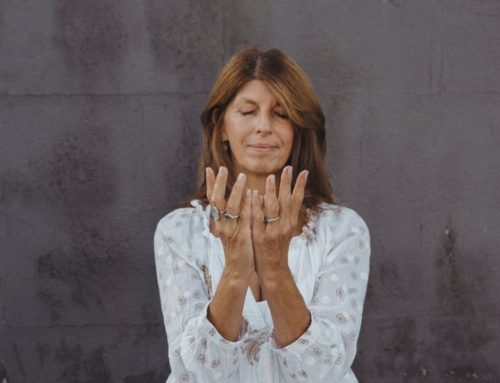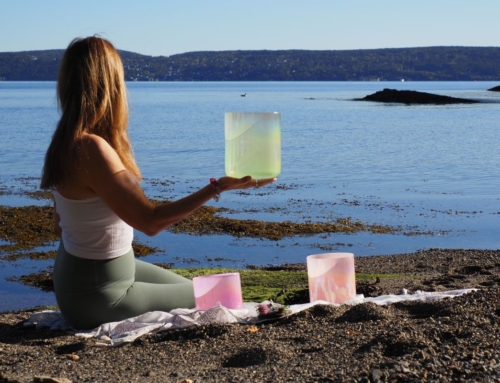Why A holistic yoga practice could be your best friend through midlife and beyond.
As a midlife yoga teacher, I have embraced menopause with a holistic approach to wellbeing. Many of my students are journeying through perimenopause, menopause and beyond. Whilst personal experience of menopause varies enormously, whether you are sailing through menopause or feeling like your life is a battle, yoga can be a helpful companion. Yoga can be your best friend at any stage of life, because it can help balance your mind, body and spirit.
My journey through midlife has brought personal challenges, heartbreak and big life changes along the way and I’m very aware how my yoga practice has in helped me transition through this period with more grace and ease than otherwise would have been possible. Quite simply it gave me effective tools to help me physically, mentally and emotionally.
Developing a holistic practice can be an asset in midlife, whether it’s changing family dynamics leaving us feeling unsettled and exhausted or the physical, mental and emotional side effects of menopause that are rocking the boat. A holistic yoga practice can support your journey.
If you practice yoga you most likely understand and feel the difference yoga makes to your life, but how does yoga help, especially in relation to menopause? Let’s dive in.
What is holistic yoga?
A holistic yoga practice is one that doesn’t just focus on the physical asana which is often how yoga is presented in the media. Whilst I love the physical practice, it is just one small part of what yoga has to offer.
A holistic yoga practice includes physical, mental and emotional/spiritual elements, a holistic practice is not based on mastering tricky poses in beautiful places! A good yoga teacher will include elements of all three in class.
Menopause brings about changes that affect our physical, mental and emotional wellbeing, so it’s important to consider how our yoga practice can be shaped to include physical, mental and emotional support, which is why a holistic yoga practice is so helpful.
There’s a lot going on in midlife!
In addition to the physiological changes that are occurring during menopause, it often coincides with other life shifts, including changing social dynamics and family demands. Teenagers leaving home, aging parents may need more support, empty nest and even divorce, making some of us question what our purpose really is. For all the above reasons midlife can be challenging but I have good news, if we develop an understanding of our changing bodies, our mental health and our emotions, it can be possible to find balance and a little magic in this stage of life.
So how is yoga helping your body physically during menopause?
There are several ways
- From the age of around 30 years we begin to lose muscle and reduced muscle mass can leave us prone to more health challenges. Yoga builds strong muscles safely using our own body weight.
- Midlife can see our bone density decrease and this can increase the risk of broken bones. The physical practice of yoga encourages strong bones and good balance.
- Mobility, joint health and balance are also important to maintain in midlife and beyond and attention to dynamic movement and stretching in yoga can support this.
- Moving our bodies also allows us to release stuck, negative energy and increases blood flow supporting our organs.
- Yoga is known to benefit healthy blood pressure and to support our nervous system
- Breathing techniques allow our bodies to feel calm and return to parasympathetic nervous system where it is able to repair and rest.
So how about the emotional part?
- You may be experiencing a roller coaster of emotions and fluctuating energy levels. During menopause hormone levels are changing and two hormones in particular that control our mood and energy are oestrogen and progesterone. This is why our anxiety levels get high and our energy can run low.
For a detailed explanation of the roles these hormones play listen to the Mel Robbins Podcast with Dr Amy Shah which covers topics of mood swings, hot flashes, belly fat, brain fog and HRT. It’s a great interview packed with useful information, you can find it here https://www.melrobbins.com/podcasts/episode-87
- If you have ever experienced an emotional outpouring in a yoga class you will know that certain yoga poses help open up our bodies and enable us to release stuck emotions, you will often feel lighter after class and your mood will be calmer. Yin classes and savasana are often an effective way to help release stuck emotions.
- Guided meditations and body scans help us improve self awareness enabling us to notice our feelings and physical sensations, allowing us to release negative energy. We can release the need to judge ourselves and become the observer. We develop compassion for ourselves and others and this helps us when we leave the mat and apply it to everyday situations.
- Moving with our breath and slowing our breathing down, often extending the exhale automatically moves our bodies from the sympathetic nervous system (fight and flight) to the parasympathetic nervous system (responsible for rest and digest) Remaining in our sympathetic nervous system for longer periods of time is associated with greater chance of physical illness, so this is a really valuable side effect of yoga.
- Breathing techniques can be used to boost our energy or to calm us down.
- Practicing visualisations with breathing techniques can help us find coping strategies to reduce the intensity of hot flashes which can be a difficult symptom during menopause.
Can yoga improve mental clarity?
Studies on the benefits of meditation indicate that a regular meditation practice improves brain health.
- Through breathing techniques, even simple ones such as apa japa breath (following the inhale and exhale) we can calm our minds and stop our racing thoughts
- Brain fog is often reported as another symptom of menopause, there are numerous studies out there supporting the power of meditation in keeping our brains more healthy.
- A recent study from UCLA found that long-term meditators had better-preserved brains than non-meditators as they aged
- Another study carried out atYale University, found that mindfulness meditation decreases activity in the default mode network (DMN), the brain network responsible for mind-wandering and self-referential thoughts
- There is also some evidence that meditation lengthens attention span and may reduce age related memory loss. Developing a regular mediation practice has helped reduce my experience of brain fog, it has enhanced my self awareness and I feel my emotional health is more balanced.
- Corpse pose known as Savasana which comes at the end of a yoga class is a time when we are more easily able to let go of the thoughts that control our mind. Having moved mindfully in class, connected mind and body through breath and movement we are able to rest in Savasana (another treat for the nervous system)
Some forms of yoga such as Yoga Nidra (guided meditation, sometimes referred to as Yogic Sleep or NSDR) support mental clarity, and can improve quality of sleep. Stanford based Neuroscientist Andy Huberman is a big supporter of yoga nidra, he explains how it has helped his sleep improve, you can listen here (6 minute listen) https://youtu.be/1rSOn0PurVc
If you would like to try yoga nidra to support your nervous system and calm anxiety,
Try my Grounding Yoga Nidra ( 20 minutes) here https://youtu.be/gjwclEDWPck
Before you start, find a quiet place where you can be comfy and lie down without being disturbed.
My personal experience through menopause is supported with my holistic yoga practice. Building a personal tool box of movement, meditations and breathing techniques is a powerful way to guide yourself through midlife.
Like the sound of this holistic approach but wondering where to start? I’ve got you!
I’ve put together a FREE resource to get you started. It’s a mini midlife reset guide to introduce you to what a holistic yoga practice can look like. Three quick and effective practices to explore over 3 days
What You’ll Get
- A short physical morning yoga practice to ease joint stiffness,
- A quick midday check in to clear any brain fog that may be creeping in (use your headphones and do it at work.
- A simple guided breathwork practice to prepare for and welcome sleep.
All three are super quick and easy to include in your day.
Click the link below to access the guide and I’ll send it to you over three consecutive days to avoid overwhelm, and to help you set yourself up for success. You can read more about it and sign up for it here https://louiseantippasyoga.ck.page/35e9fb9a62




